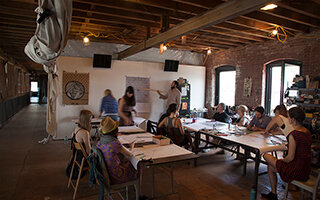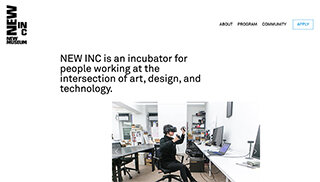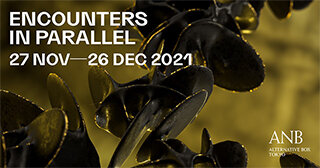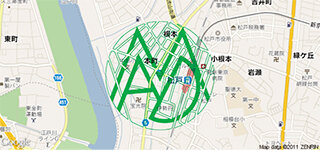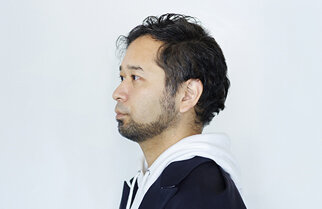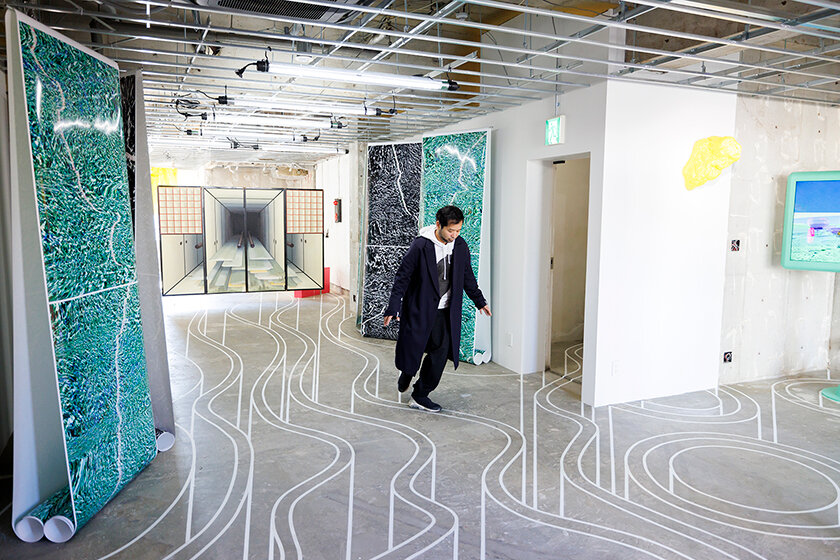
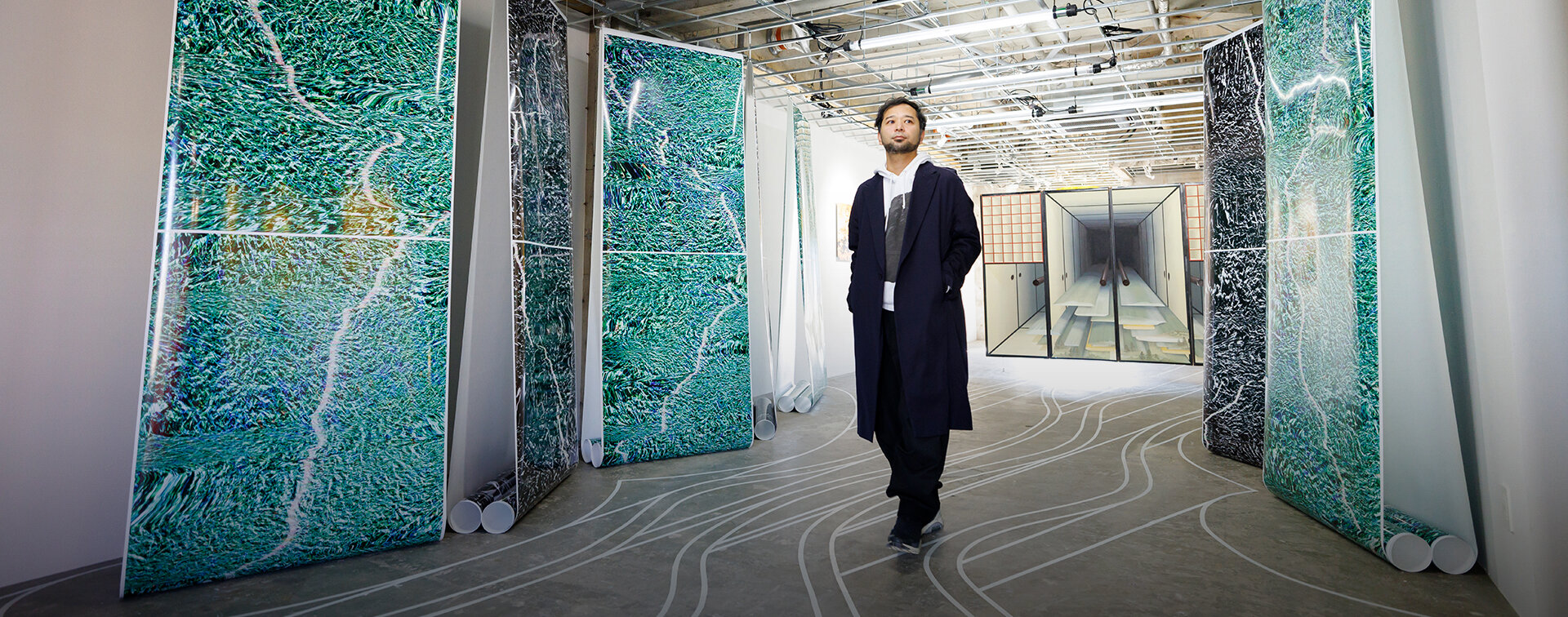
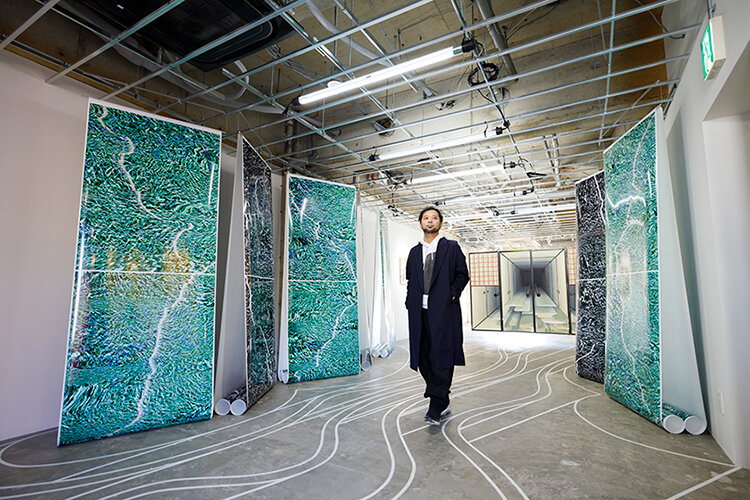
INTERVIEW
132
Junya YamamineCurator
Squatting in Abandoned Spaces Born From Redevelopment
People meeting people in “good chaos”
After gaining experience as a curator at the Tokyo Photographic Art Museum, the 21st Century Museum of Contemporary Art, Kanazawa, and Art Tower Mito's Contemporary Art Center, Junya Yamamine became the co-representative of Tokyo Art Acceleration, a foundation that runs ANB Tokyo, where he plans and operates exhibitions. He also served as the Japan-side supervisor for the KAWS TOKYO FIRST exhibition in the Mori Arts Center Gallery. At ANB Tokyo, Yamamine works to create "a place where the unconventional occurs" through new encounters, such as in exhibitions that encourage artists to resonate with each other through curator facilitation. We interviewed him on the potential things such a place can bring to a city.
The emergence of a mixed zone in Roppongi
I'm interested in the energy that comes from different types of people gathering or encountering one another, as well as places that can generate creativity. ANB TOKYO, where I do planning and directing work, is an art space that originated with the attempt to create a kind of societal "mixed zone" in the art town of Roppongi.
It all began back when Akatsuki Inc. CEO Tetsuro Koda was curious to know "what kind of attractive power art has." Around that time, this building was listed for a fixed-term lease. That was how we started talking about setting up an art building in Roppongi, and what started off as just giving advice became an official collaboration.
The impact of COVID-19 threw some curveballs at us, but once we opened and ran exhibitions we made a variety of discoveries. Art brought together people in a way that transcended reciprocity and helped dispel the stifled atmosphere society was suffering from due to the lack of social interactions. Company CEOs mingled and artists enjoyed chance encounters with each other at the exhibitions. ANB Tokyo began to function as a place where people could build nonconventional relationships.
ANB Tokyo
An art complex building founded by Tokyo Art Acceleration that supports artist with ambitious practices, builds an art-centered community, and plans and runs exhibitions, talks, and other events. Akatsuki Inc. CEO Tetsuro Koda and Junya Yamamine serve as representatives.
Fuzziness is imperative when creating a creative space
Even before we set up ANB Tokyo, Roppongi was already lined with well-established galleries. There are major museums like The National Art Center, Tokyo, or the Mori Art Museum, and prominent smaller galleries like the Taka Ishii Gallery or the Tomio Koyama Gallery. But I felt that the town lacked something in between, a fuzzy space that didn't have a clear purpose.
The area around Roppongi used to be dotted with enigmatic places like "SuperDeluxe" and "magical, ARTROOM." They offered a kind of "free space" that attracted a particular crowd of people and generated a certain type of energy and creativity. We set up ANB Tokyo because we wanted to provide a space like that.
ANB Tokyo is also a new type of challenge for me now that I've learned to put on exhibitions within a given environment and budget. Up until now, my subject matter of choice had been media theory, where I worked on exhibitions in which I would pose questions such as "What kinds of effects does technology have on society?" and "What potential things can happen in the current media climate?" But the visitors and volunteers who received that message then said, "You're hitting us over the head with this message. We get it. But what are we supposed to do about it?" That's when I started wondering what my questions were supposed to lead to, and felt that I should also be addressing the questions that I had posed. I began to take an interest in building new structures and ventures in actual society.

Strangers encounter each other, igniting something
An important concept of ANB Tokyo is to have new things born out of the intermingling of people with interesting talents from different communities. That's why I thought the key was to create situations that would generate creativity instead of setting up exhibitions with the conventional top-down curation approach. This new kind of curation may look like a mess of artists working in a jumble, but that is our attempt to create a "mixed zone" to connect artists with each other, as well as audiences with each other. Strangers who have never encountered each other meet and mingle, igniting something. There are people who are attracted to that kind of opportunity, and my challenge is to tie those people together with the creativity that is generated in that space and drive both aspects forward.
There are many cases abroad that have succeeded in creating that kind of mixed zone. Pioneer Works, the non-profit cultural center in New York City, is one such example. It's an experimental space for the arts and sciences that seems to be resulting in all sorts of collaborations and ventures. I have never gone yet, but would like to visit someday. Also in New York City, the New Museum of Contemporary Art leads a cultural incubator called NEW INC, which I think is another interesting mixed zone.
Pioneer Works
A non-profit cultural center located in Red Hook, New York City that aims to build "community through the arts and sciences to create an open and inspired world." It provides spaces for working and exchanging ideas as well as tools, and 85% of its funds are used for free public programs.
Photo:Taylor Nelson
New Museum of Contemporary Art / NEW INC
A museum of contemporary art founded by Marcia Tucker in 1977. It is known for putting on exhibits featuring young and innovative artists. When it moved locations in 2007, the new building was designed by SANAA partnered with Gensler. NEW INC is an incubator newly established in 2014 that provides programs and business support dedicated to art, design, and technology.
https://www.newinc.org/
In order for such a venture to succeed, it needs diverse ways of measuring and evaluating its effects, such as that of KPIs dealing with endeavors with unpredictable value generation. The United States and Europe have systems in place to visualize the effects mixed zones have on society, as well as entrepreneurship in social sectors such as culture and welfare, and established philanthropic support for art by major corporations and the wealthy. I think those factors form a basis for the success of mixed zones in those countries.
"To properly project the theme," "to be mindful of the artist's life," and "to have faith in unstructured energy"
There are three approaches I place importance on for curation. The first is "to properly project the theme." In other words, to understand social situations in order to pose an original question through art that incorporates the artists' personal perspectives and intuitions that cannot be explained in words, and present it in a way that speaks to the viewers' emotions. The aim is to create an eye-opening experience for people living in the same era.
The next is "to be mindful of the artist's life." If it's a distinguished artist, I examine the artist's career and figure out an aspect of his or her life that will "ignite" something in peoples' hearts and employ as a theme. For newer artists, I pose a question that might serve as a turning point for that artist's career and wait to see what will result. To be mindful of an artist's life—sometimes as a narrator and sometimes as a mentor—is part of a curator's job.
The final approach is "to have faith in the energy that will result." I accept whatever chaotic, indefinite, and uneven state the WIP (work in progress) is in and facilitate the process of those unpredictable things resulting in a seed. In doing so, strangers who have never encountered each other get the chance to meet, creating a moment of ignition.
For example, let's say an artist is going to bring in work that uses neon lights, and then a different artist incorporates that light in their own work. By having faith in the energy that results from that kind of mingling, accepting the ambiguity of the situation, and refining the appeal found there produces fascinating exhibitions unlike any before. The title of the exhibition held at ANB Tokyo, Encounters in Parallel, is meant to represent the encounters of artists who usually work in separate places parallel to each other.
Encounters in Parallel
A special exhibition at ANB Tokyo that ran from November 27 to December 26, 2021. It is an updated iteration of ENCOUNTERS, a special 2020 exhibition for the opening of ANB Tokyo that gathered 26 artists together. This time, 11 artists presented their work in shared spaces over four floors.
Venue:ANB TOKYO (5-2-4 Roppongi, Minato-ku, Tokyo)
Dates:Saturday, November 27 to Sunday, December 26, 2021
https://6mirai.tokyo-midtown.com/event/encounters_in_parallel/
Japan's Galápagos syndrome affects the field of art as well
Some people say that Japan's art market is not growing. It's true that Japanese artists only represent a low, single-digit percent of the global art market. Still, there has been a dramatic increase in activity compared to a few years ago. Places like Seibu Shibuya and Isetan that only used to deal with classic art are now getting acknowledged for dealing with much more contemporary art.
Even then, the art market in Japan is still very small, and I feel like in recent years, the hub for contemporary art in Asia outside of China has shifted to South Korea. I also think that there is a deep-rooted sense of Japan's former "national isolation" in all aspects of this country, and the arts is no exception. In international competition where nations go head to head with each other, people in Japan typically do not jump to compete as a member of the global community. Instead, people still tend to focus on what they can do within the distinctive market in Japan. On the other hand, South Korea has always developed its market with the global stage in mind. The results of that can be seen in the field of art, as well.
If we were to term the global standard of art as "art" and Japan's distinctive notion of art as its Japanese pronunciation "aato," I don't think the general Japanese public is familiar with "art" yet. Meanwhile, the types of artists who go overseas from a young age are all conscious of "art." However, the more "aato" and its Japan-specific styles proliferates within Japan, the more of a divergence there will be between "aato" and "art," exacerbating the Galápagos effect. As "aato" grows, tailored to Japanese populism and market values, Japan becomes an extremely difficult environment for those artists who want to compete with globally relevant art. But choosing to cater to Japanese inclinations removes the artist from global trends, so it's vital for emerging artists to avoid getting manipulated by Japan's original views on "aato." Going abroad may be one way to do that.
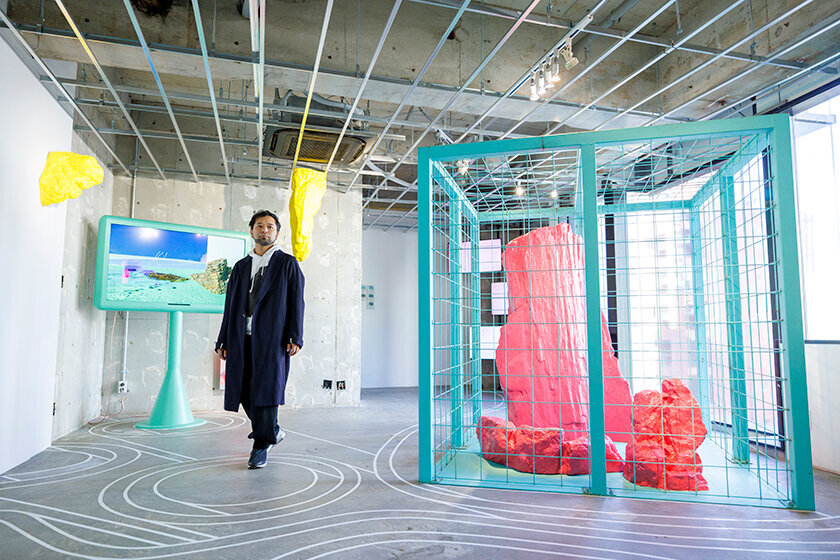
The dynamism of cities transforming due to art and organic chaos
One of my favorite places in the world is London's Tate Modern, a national museum of modern and contemporary art along the River Thames. It was once a power station that was given a new life as an art gallery. The reason I like this place is because the conversion into a museum completely recolored the area. The area around the abandoned power station had been run-down and unsafe, and it's a great example of how establishing a museum made the city itself change. A single museum updated the image of the area and naturally led to gentrification. In Japan, a successful example of the relationship between a museum and a city is the 21st Century Museum of Contemporary Art, Kanazawa.
Tate Modern
A national museum of modern and contemporary art located in the South Bank district next to London's River Thames in the United Kingdom. It forms part of the "Tate" network of national galleries along with Tate Britain and others. Since its opening after a conversion from what was once the Bankside Power Station building, it has become a highly popular destination for local residents and tourists alike.
Another example is PS1, a place that is now an affiliate of MoMA. Its beginnings date back to 1971, when Alanna Heiss founded an organization called The Institute for Art and Urban Resources and converted an abandoned school into the P.S.1 Contemporary Art Center. It evolved into a unique cultural space where artists could take initiative in the then dangerous city of New York. This example shows us that although not readily apparent, it is meaningful for society to "encompass" a place that is unpredictable (i.e. "a good kind of chaos") as part of the community. When long-term economic perspectives are brought into urban planning and effects of new values become measurable, it enables developers to invest accordingly.
Squatting in the nooks of a city's metabolism
Roppongi now has a lot of abandoned buildings due to its redevelopment. It would be interesting to be a squatter in those properties. When a city is undergoing metabolism in the form of redevelopment, I think there's potential for the abandoned properties to be used in some way. We have a lot of emerging energy through the people involved with ANB Tokyo, and I now have a much broader perspective compared to when I was working in museums, so squatting in the city of Roppongi is something I would like to try.
Abandoned properties are like little nooks in a city. The existence of such nooks leads to people who look to use them, and it's important for a city to have a culture that is lenient towards that kind of thing. The nook-like places are only governed by a couple of rules, and taking over such a place has the potential for something interesting. There's no predicting what might happen there, and whatever results is destined to disappear along with the location someday, but I'm sure it will remain in the memories of the people in that city.
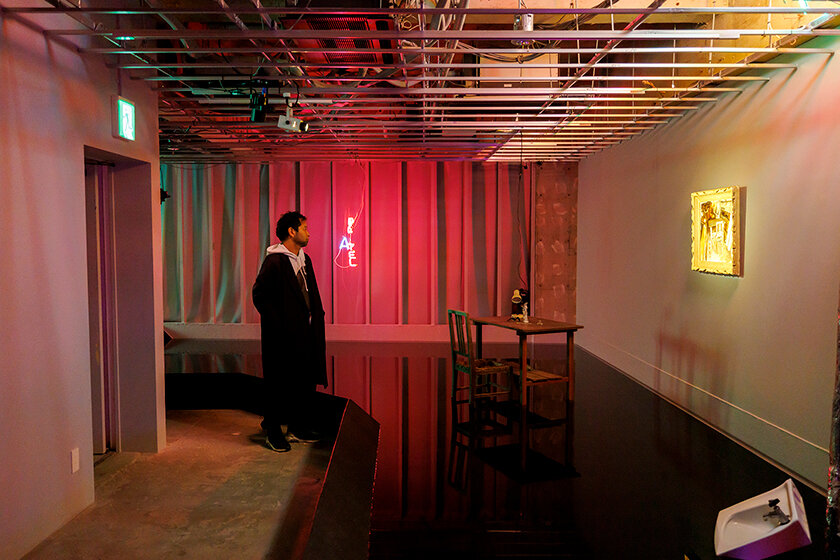
A discovery whether it succeeds or not. Cities require lenience.
When I use the word "lenient," I don't mean that the city should give permission to squat in the abandoned spaces and expect something worthy to come out of that. I think the best stance is for the city to have the lenience to say it will be a discovery whether it succeeds or not, and enjoy the serendipity that results.
A good example is the private community development activities by a company called Machizu Creative in Matsudo, Chiba Prefecture. Unused housing is a serious issue in Matsudo, and the initiative aims to sublease those houses to artists to revitalize the community. Entitled MAD City, it lists all kinds of properties available for renovation. The good thing about this example is that those houses don't have to be returned to their original state at the end of the lease. That's clever. That way, the artists remodel the properties however they want. But although the artists have complete freedom, they still have to actually live there, so the resulting environment is good for living. The lenience to allow that kind of freedom is necessary for those who provide such spaces.
I think allowing freedom and not excessively expecting anything out what happens in unpredictable spaces is the key to "society encompassing a good kind of chaos."
Machizu Creative / MAD City
A community development company for designing autonomous local revitalization that mainly offers its services around Matsudo City in Chiba Prefecture. They offer overall area management services that begins by narrowing down the target district and building a brand for that area based on the historical context within that small range. MAD City is a project that connects abandoned properties with creative endeavors to support creators and their work.
http://www.machizu-creative.com/
Photo location:ANB TOKYO Encounters in Parallel (exhibition until December 26, 2021)
Editor's Thoughts
I used to work in a city that had undergone rapid development on land reclaimed from the ocean. Every time I looked at that orderly layout of the area I always thought something about it was off, that "it looks orderly, but it's missing something." That's why it was such an "aha" moment when Yamamine-san used the phrase "unpredictable space." I think having unpredictable nooks in a city that have rapidly shifting energy is the kind of playfulness that makes people feel that there is a place for them in that city. If Yamamine-san decides to go ahead with squatting in Roppongi, I would want to go interview him right away! (text_Koh Degawa)
RANKING
ALL
CATEGORY





